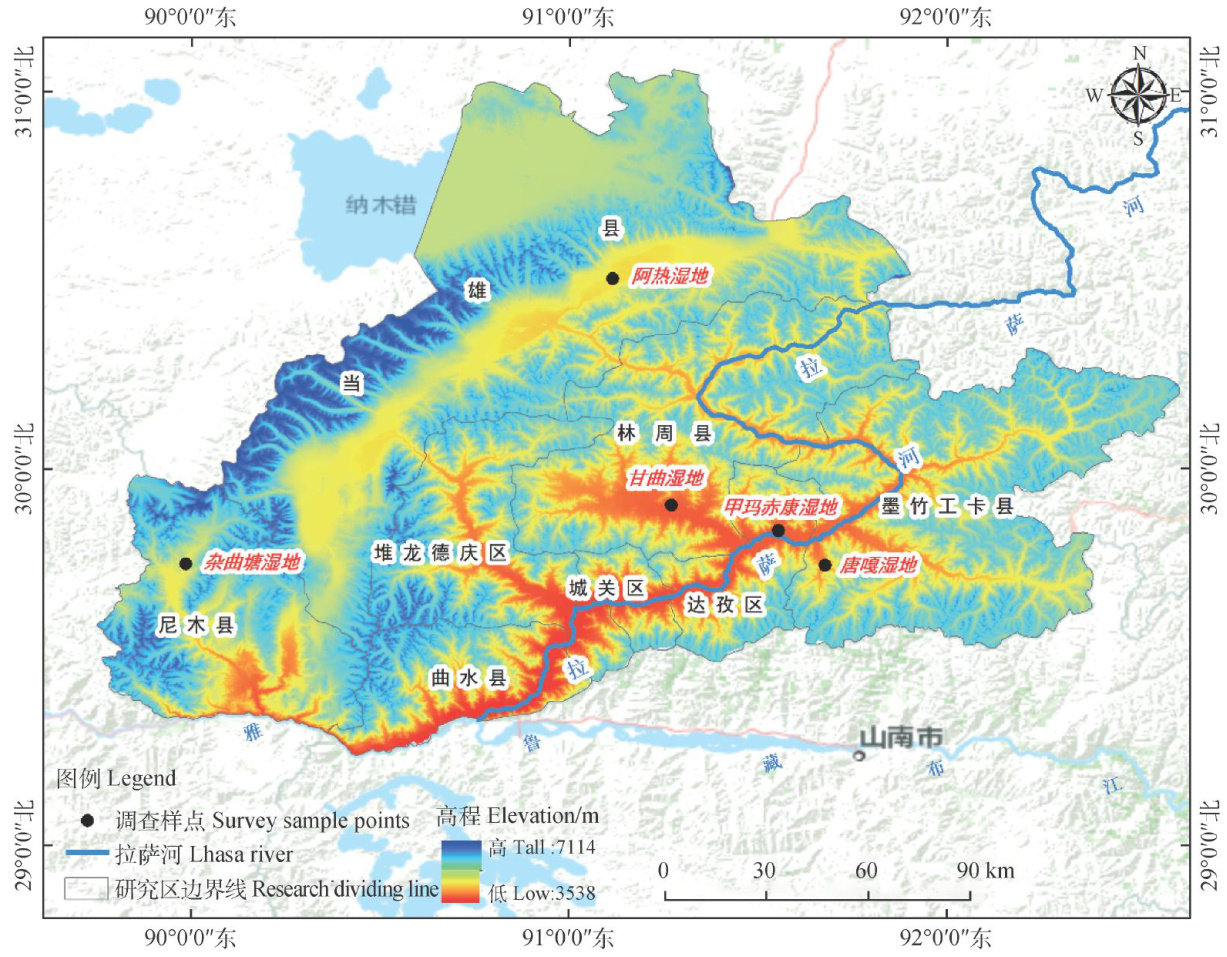拉萨河流域沼泽湿地优势草本生态位及种间联结分析


打开文本图片集
doi:10.11733/j.issn.1007-0435.2025.08.026
关键词:拉萨河流域;沼泽湿地;生态位;生态响应;种间联结中图分类号:Q948.1 文献标识码:A 文章编号:1007-0435(2025)08-2666-11
Abstract:To reveal the distribution characteristics of ecological niches and interspecific associations of dominant species in the plant communities of marsh wetlands in Lhasa River Basin,in this study we employed the “Levins”method,“Pianka”method,variance ratio method (VR) ), x2 test,association coefficient (AC) and Ochiai(OI) indexes to analyze 1O dominant herbaceous plant species in the plant communities of five typical marsh wetlands.The results showed that the dominant herbaceous plant communities in the study area were primarily composed of species with wide and medium ecological niches,and the degree of niche overlap among these species was relatively high.Among the five wetlands,there were diferences in the distribution and response rates of developing and declining species.The overallplant communities in the five wetlands exhibited negative associations,indicating intense competition among species. The x2 test and association coefficient 0 .AC) values revealed that 73.3% , 55.6% , 64.4% , 66.7% ,and 60.0% of species pairs in the five wetlands displayed negative associations, respectively. The OI index indicated that the Tangga Wetland (C2) had the highest proportion of species pairs with OI⩾0.8 , which suggested significant strong associations among species.Through interspecific association analysis,it was found that the plant communities in the marsh wetlands ofLhasa River Basin are in the early stages of succession,with unstable structures,providing important ecologi cal insights of wetland restoration and biodiversity conservation.
Key words:Lhasa River Basin; Everglade;Niche; Ecological response ; Interspecific association
湿地是指自然的或人工的、长久的或暂时的沼泽地、湿原、泥炭地或水域地带,是陆地和水生生态系统之间的过渡带。(剩余15973字)